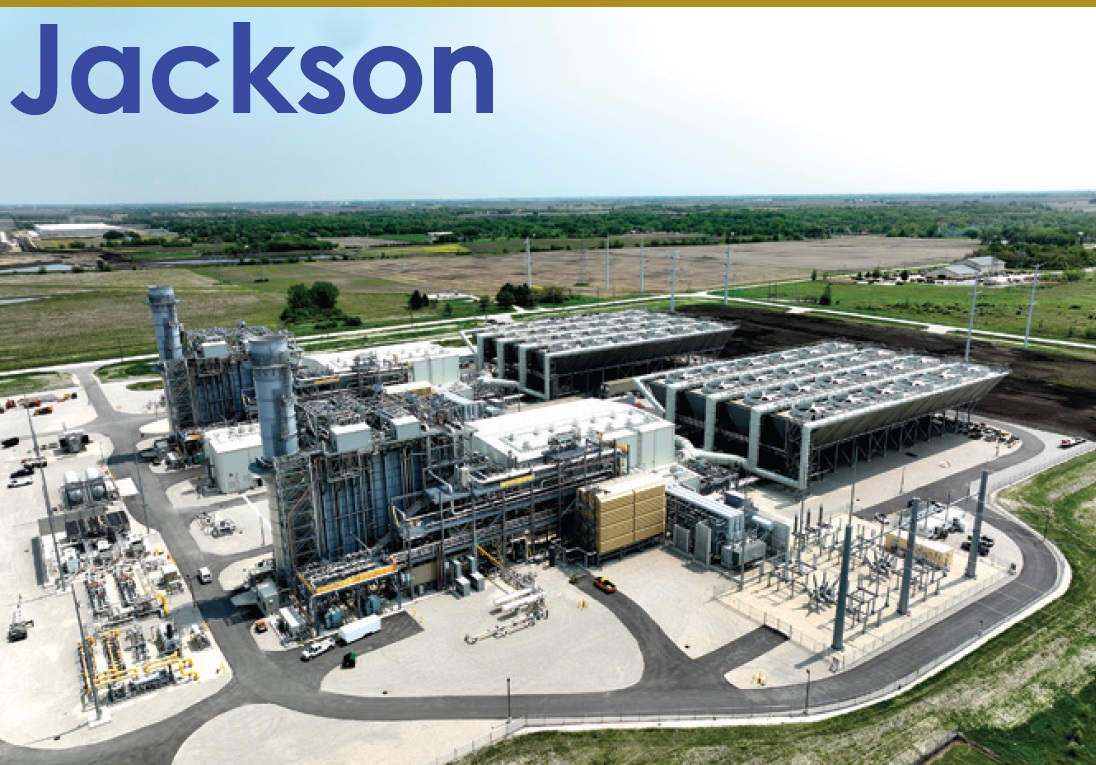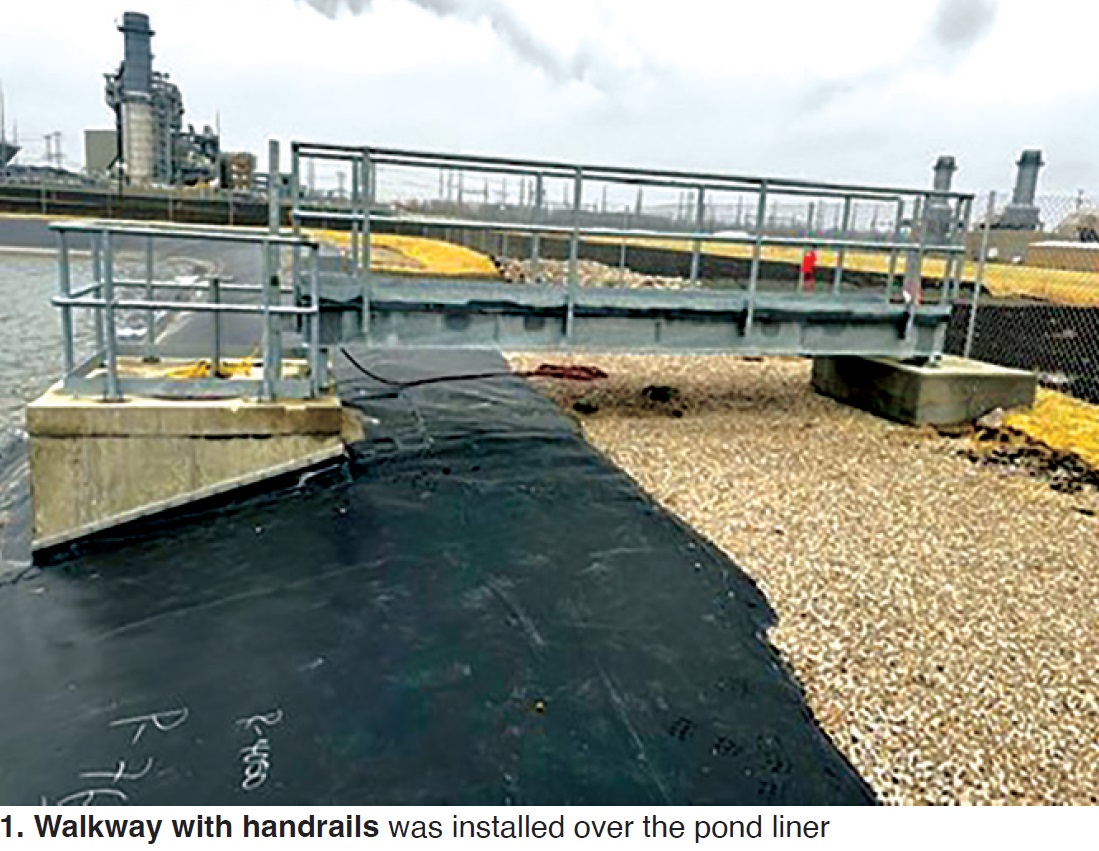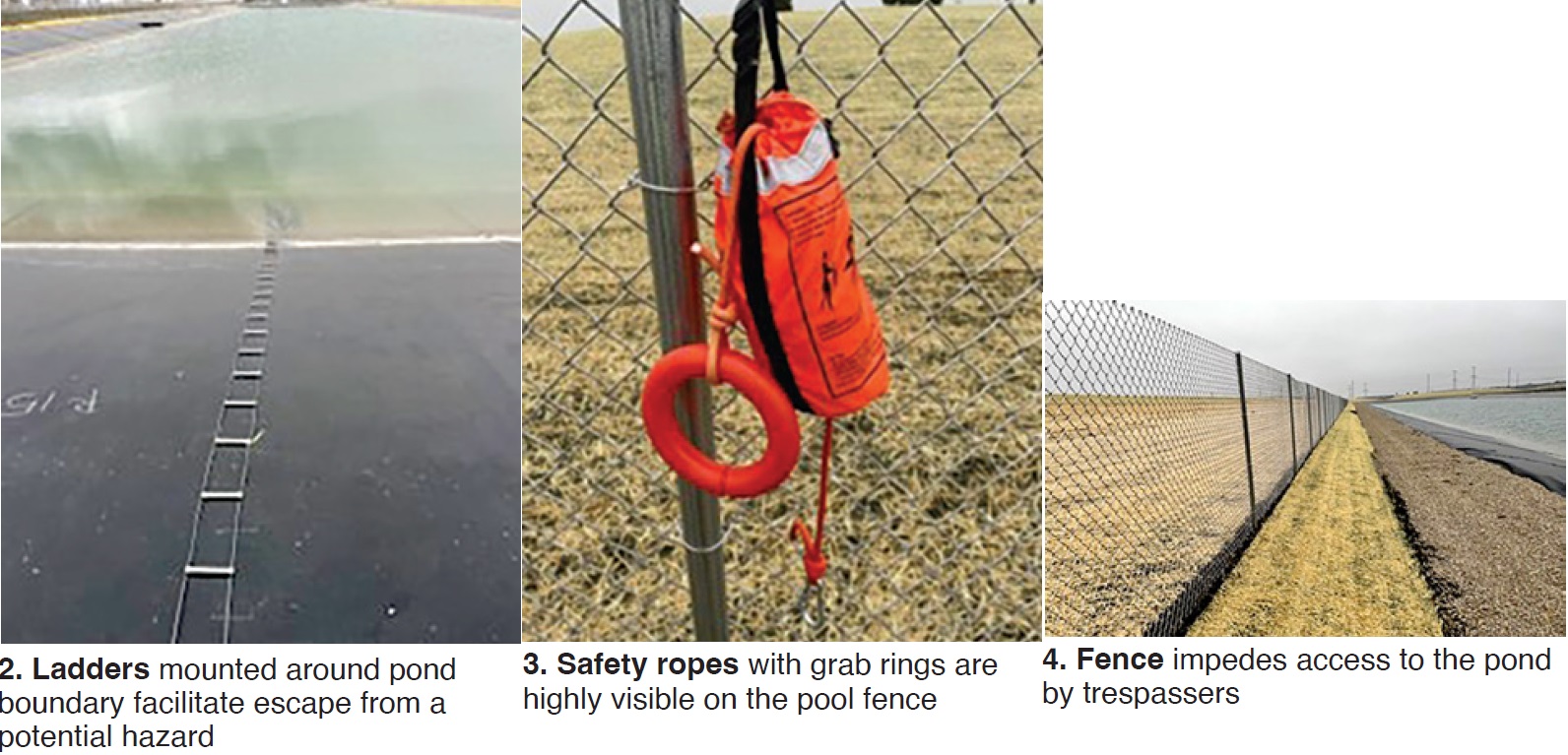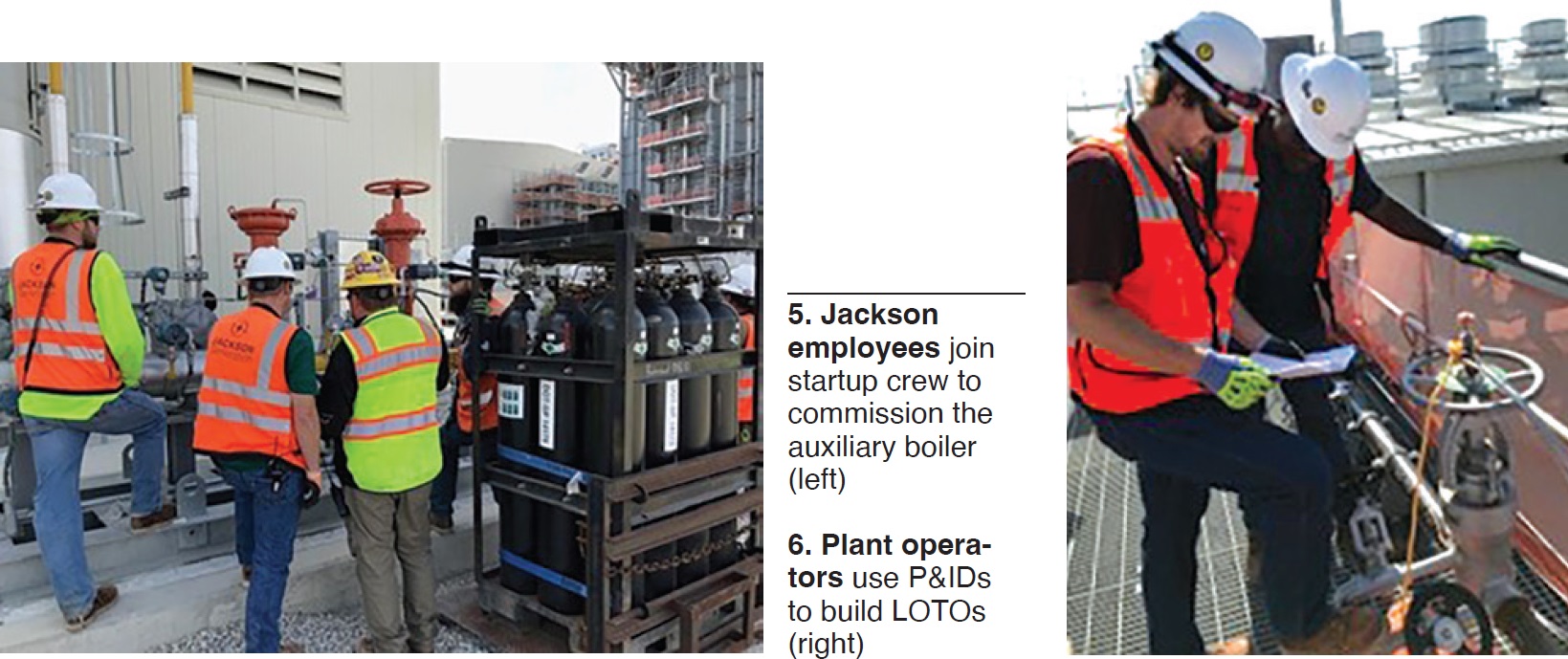
Jackson Generation
Owned by J-Power USA
Operated by NAES Corp
1200 MW, two 1 ×1 combined cycles powered by Mitsubishi 501JAC gas turbines and SRT40AX steam turbines with HRSGs from John Cockerill, located in Elwood, Ill
Plant manager: Rick Dejonghe
Establishing safety parameters for Jackson’s retention pond
Challenge. When constructing a powerplant, the EPC takes the contract agreed on by the owners and begins to build the facility based on the engineering plans. The retention pond designed by the EPC for Jackson Generation met the specifications required by the contract. However, during the commissioning phase of the project different ideas were proposed to improve existing infrastructure and processes.
While the Jackson Generation team was creating plant rounds and water-chemistry procedures, participants noticed numerous safety/environmental challenges that would need to be addressed when monitoring and testing pond water. Examples included the following:
- How would staff safely retrieve water samples?
- How would staff rescue someone if they fell into the pond?
- How would plant personnel keep wildlife out of the pond?
Solution. To access and remove the pond-discharge manhole cover to verify discharge flow, staff would walk on the sloped foundation liner down to the engineered platform provided. This walkway proved to be a slip hazard, especially during winter operation.
A metal walkway was erected and installed to mitigate slip hazards while performing this task (Fig 1). It provided personnel a solid foundation while verifying flow from the retention pond.

The Jackson team also purchased ladders, which were mounted around the pond boundary (Fig 2). They ensure staff can escape a potential hazard in a safe and immediate manner.
Lastly, the Jackson team equipped the retention-pond fence boundary with safety ropes with permanent grab rings attached (Fig 3). In the event the employee cannot use a ladder, a rescue rope is readily available.
A chain link fence was also installed around the border of the pond to keep wildlife and trespassers out of the area (Fig 4).

Results. The initial walkway to the retention-pond discharge had many hazards. First, the liner would become slick when snow, rain, or dust accumulated on its surface. This made grabbing water samples or checking discharge flow hazardous.
The liner also was black, so during night operation it became difficult to recognize where the engineered platform was without a flashlight. With the walkway installed, the operator now can walk from the gravel to the engineered platform without the need to be on the slick foundation liner.
The safety ropes and ladders make a rapid rescue feasible if a person were to fall in.
Plus, the 7-ft-tall chain-link fence provided a safeguard against encroachment by deer or other trespassers from the neighboring fields.
In sum, staff made it possible to enhance the safety factors around the pond and mitigate the hazards identified.
Project participants:
Corbin Shanklin, Lead control room operator
Entire plant O&M team
Develop your training program during commissioning
Challenge. Constructing and commissioning a powerplant is challenging. Each system goes through several stages—including construction, testing, commissioning, and turn-over to the startup team. All of these are handled by the EPC and its construction/startup crew.
Roadblocks in the process that the startup crew may experience may be aggravating, but they can serve as excellent training exercises for the operators who will take over after commissioning. Jackson Generation’s management understood the importance of this experience and began building the plant’s training program with every evolution witnessed.
Solution. First step: Each operator had to choose one or more systems that he or she would become a “system expert” on. Anytime a system walkdown, test, or vendor was onsite, or commissioning was to be done, the system expert was present, taking notes along the way.
This proactive approach proved more valuable than the traditional classroom training given before turning over the plant to its owners. From the notes taken, many different training tools were developed. SMEs (subject matter experts) used the information gathered to complete one-on-one training and table-top exercises with their peers to share the knowledge gained.
Results. Knowledge operators gained from their commissioning experiences was used to develop the plant’s training program—including operating procedures and troubleshooting tips. Vendors that were onsite participated by helping in the creation of operators’ rounds checks/parameters and preventive-maintenance tasks.
Working hand in hand with the startup crew enabled staff to develop more-detailed procedures for starting, stopping, and troubleshooting equipment than could be produced by using equipment manuals only (Fig 5). Procedures developed incorporated Jackson’s actual valve numbers, photos, and setpoints required for future use. Going a step further, the system experts labeled every pipe, valve, and important piece of equipment in their respective systems.

Next step was for the plant expert to gather every P&ID, system description, equipment manual, and procedure pertaining to a given system and build a so-called system folder—a collection of everything plant personnel would need to operate and maintain their systems. As you might imagine, such a library is invaluable for making decisions. Finally, the P&IDs were marked up by the operators to identify the critical valves and equipment for creating the LOTO points needed for tagging out certain processes (Fig 6).
The end goal of this exercise was to be prepared for any obstacles after the owners took care, custody, and control of the plant. By shadowing the startup crew, the system experts experienced many unusual events. Creating the system-expert folders laid the foundation for the training program future employees would benefit from.
Project participants:
Corbine Shanklin, Lead control room operator
Entire plant O&M team


